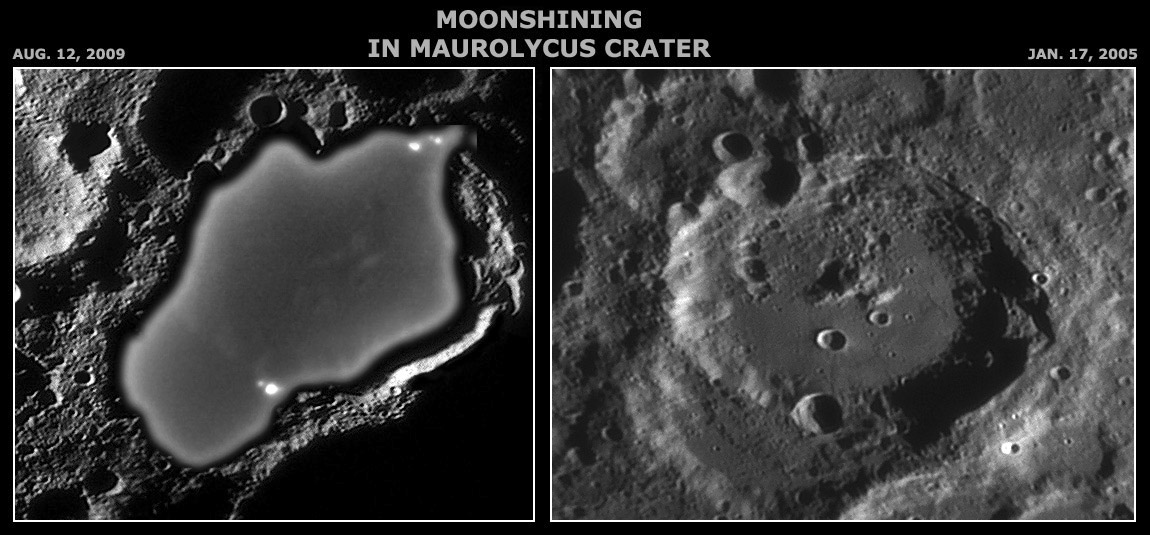February 5, 2010
Seeing in the Dark
images by Paolo Lazzarotti, Massa, Italy
Under a very dark sky, I have heard, you can see by the starlight. And certainly the full Moon makes enough illumination to take midnight hikes. Somewhere between those extremes are the shadowed areas within lunar craters. The shadows are inky black, without an atmosphere to scatter light, but are the shadowed areas completely black? The answer is doubly no. We know that the very sensitive camera on the Kaguya orbiter could image the always shadowed floor of Shackleton. And now we see that some Earthly cameras can also penetrate lunar shadows. Paolo manipulated one of his normal high quality Chuck Wood
Technical Details
Left image: Aug. 12, 2009, 02:07 UT. Gladius CF-315 Lazzarotti Opt. telescope + LV-11392 PRO experimental camera + Edmund Optics R filter, 100 of 2000 frames stacked; right one: Jan. 17, 2005
Related Links
Rükl plate 66
Paolo's website
COMMENTS?
Click on this icon File:PostIcon.jpg at the upper right to post a comment.




